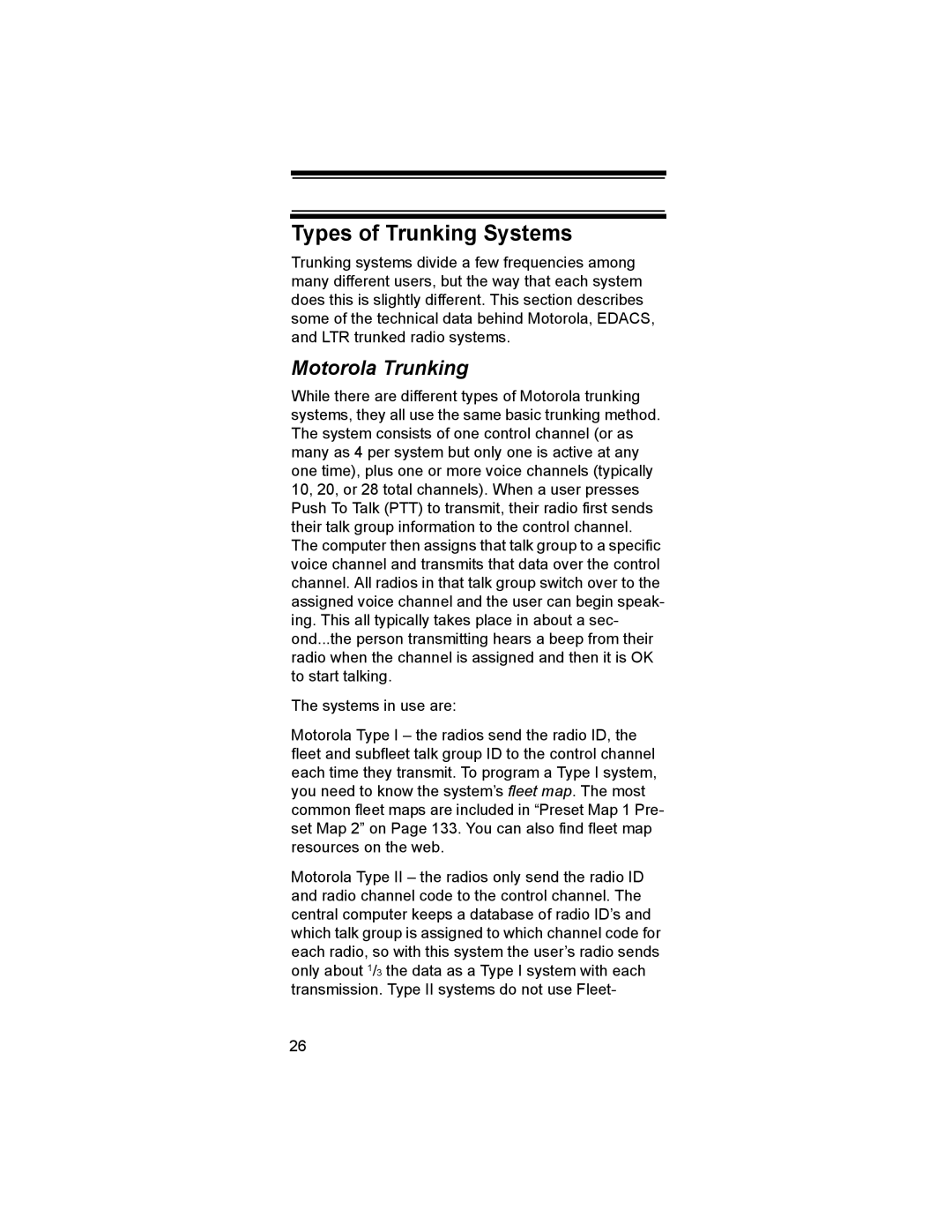Types of Trunking Systems
Trunking systems divide a few frequencies among many different users, but the way that each system does this is slightly different. This section describes some of the technical data behind Motorola, EDACS, and LTR trunked radio systems.
Motorola Trunking
While there are different types of Motorola trunking systems, they all use the same basic trunking method. The system consists of one control channel (or as many as 4 per system but only one is active at any one time), plus one or more voice channels (typically 10, 20, or 28 total channels). When a user presses Push To Talk (PTT) to transmit, their radio first sends their talk group information to the control channel. The computer then assigns that talk group to a specific voice channel and transmits that data over the control channel. All radios in that talk group switch over to the assigned voice channel and the user can begin speak- ing. This all typically takes place in about a sec- ond...the person transmitting hears a beep from their radio when the channel is assigned and then it is OK to start talking.
The systems in use are:
Motorola Type I – the radios send the radio ID, the fleet and subfleet talk group ID to the control channel each time they transmit. To program a Type I system, you need to know the system’s fleet map. The most common fleet maps are included in “Preset Map 1 Pre- set Map 2” on Page 133. You can also find fleet map resources on the web.
Motorola Type II – the radios only send the radio ID and radio channel code to the control channel. The central computer keeps a database of radio ID’s and which talk group is assigned to which channel code for each radio, so with this system the user’s radio sends only about 1/3 the data as a Type I system with each transmission. Type II systems do not use Fleet-
26
